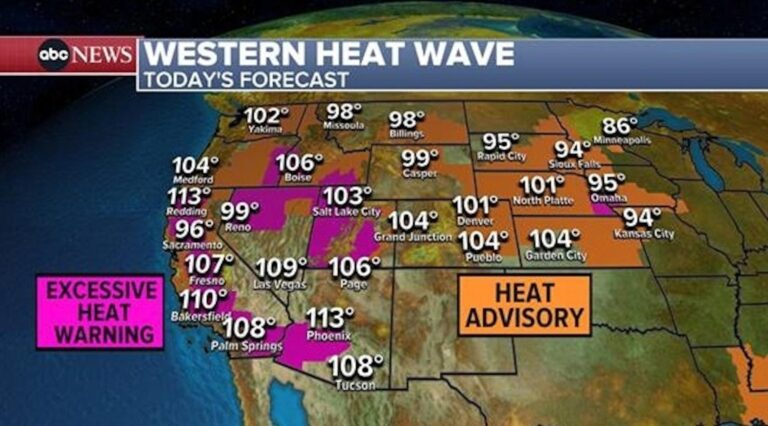A historic heat wave has swept across Europe, shattering temperature records and prompting widespread alerts as communities grapple with extreme heat. From coastal cities to inland regions, soaring temperatures have strained infrastructure, impacted public health, and raised urgent questions about climate resilience. This unprecedented weather event underscores the growing challenges posed by global warming and has sparked swift responses from governments and emergency services throughout the continent.
Historic Heat Wave Strains European Infrastructure and Public Health Systems
European cities have been pushed to their limits as soaring temperatures caused widespread disruption across critical infrastructure. Public transportation services faced delays and cancellations due to overheated tracks and malfunctioning signaling systems, while energy grids struggled to keep pace with unprecedented demand for air conditioning. Water reservoirs and river levels dropped dramatically, raising alarms over potential shortages and forcing municipalities to impose strict water usage restrictions. Urban heat islands amplified the intensity of the crisis, particularly impacting vulnerable populations in densely populated areas.
Key challenges faced during the heat wave include:
- Increased emergency room visits for heat-related illnesses, particularly among the elderly and children
- Overburdened healthcare facilities running short on cooling resources and staff
- Strains on agriculture due to prolonged drought and crop failures
- Transportation bottlenecks caused by infrastructure stress
| Country | Peak Temperature (°C) | Recorded Infrastructure Failures | Heat-Related Hospital Admissions (%) |
|---|---|---|---|
| France | 45.2 | Metro delays, power outages | 18% |
| Germany | 42.8 | Rail disruptions, water shortages | 15% |
| Italy | 44.6 | Road damage, emergency room overcrowding | 22% |
| Spain | 46.1 | Power grid overloads, crop failures | 20% |
Agricultural Impact and Economic Consequences of Prolonged High Temperatures
The prolonged spell of extreme heat across Europe has inflicted significant damage on the agricultural sector, threatening food security and rural livelihoods. Crops such as wheat, corn, and grapes have experienced severe water stress, leading to reduced yields and compromised quality. Farmers are grappling with parched soil and shrinking water reservoirs, which have forced many to cut irrigation or abandon certain harvests altogether. Livestock have also suffered from heat stress, resulting in decreased productivity and increased mortality rates. This environmental strain underscores the growing vulnerability of European agriculture to climate anomalies.
Key economic repercussions include:
- Sharp declines in crop output, pushing up prices in domestic and international markets
- Losses for agribusinesses and supply chain disruptions impacting food availability
- Heightened financial pressure on small and medium-sized farms dependent on consistent harvests
- Escalated government spending on subsidies and drought relief programs
| Crop | Estimated Yield Loss | Economic Impact (in million €) |
|---|---|---|
| Wheat | 20% | 450 |
| Corn | 25% | 380 |
| Grapes | 30% | 290 |
Urgent Recommendations for Governments and Citizens to Mitigate Heat Wave Effects
Governments are urged to launch immediate public awareness campaigns highlighting heat-related health risks and preventive measures. Establishing well-equipped cooling centers in urban areas can provide relief to vulnerable populations, especially the elderly and those with pre-existing health conditions. Authorities must also enhance emergency response protocols to address heat-induced illnesses and coordinate with healthcare providers to ensure adequate medical supplies. Urban planners should accelerate the implementation of green infrastructure, such as planting trees and creating shaded zones, to naturally reduce ambient temperatures.
Citizens are encouraged to stay hydrated, avoid strenuous outdoor activities during peak heat hours, and regularly check on elderly neighbors and vulnerable family members. Employing light, breathable clothing and using sunscreen and hats can further mitigate exposure risks. It is also recommended to minimize electricity use during afternoon peaks to prevent grid overloads and power outages. Below is a quick checklist of essential actions individuals can take:
- Drink at least 2 liters of water daily
- Use fans or air conditioning when possible
- Limit outdoor exercise between 11 am and 5 pm
- Close curtains during daylight to reduce indoor heat
- Stay informed via local weather updates
| Action | Benefit |
|---|---|
| Establish Cooling Centers | Protects vulnerable groups |
| Public Heat Warnings | Raises awareness & preparedness |
| Energy Consumption Reduction | Prevents power outages |
| Hydration & Rest | Reduces heat-related illnesses |
Insights and Conclusions
As Europe contends with one of the most intense heat waves in its recorded history, the event underscores growing concerns about the impacts of climate change on the continent. Authorities continue to monitor temperatures closely while urging residents to take necessary precautions. The heat wave serves as a stark reminder of the urgent need for comprehensive strategies to mitigate and adapt to the escalating effects of global warming. Further updates will follow as the situation develops.



